Did you know that there are numerous types of birds worldwide that catch fish as part of their diet? These avian predators have evolved various adaptations and fishing behaviors to successfully catch fish and survive. Let’s explore the diverse array of birds that engage in fish-catching activities.
From majestic eagles and ospreys to graceful herons and skillful kingfishers, there are numerous bird species that have mastered the art of catching fish. Their remarkable hunting prowess and unique adaptations make them fascinating creatures to study and observe. Whether it’s plunge-diving from great heights or skimming the water’s surface, each bird has its own method of securing a tasty meal.
Join us as we delve into the world of these fish-catching birds, exploring their hunting techniques, adaptations, global distribution, and the importance of conserving their habitats. Discover the economic and cultural significance of these avian predators and learn how research, education, and citizen science contribute to our understanding and conservation efforts. Stay tuned for an intriguing journey into the captivating realm of birds that catch fish!
Types of Fishing Birds
When it comes to fish-catching birds, nature has bestowed an incredible variety of species with the specialized adaptations needed to excel at piscivorous pursuits. From majestic eagles to agile kingfishers, these avian fish catchers have developed remarkable skills to thrive in their unique environments.
“The diversity of birds that specialize in catching fish is truly remarkable. Each species has its own set of adaptations and fishing techniques that make them highly efficient hunters.”
Let’s explore some of the notable types of fishing birds:
Eagles
Eagles, such as the bald eagle and golden eagle, are renowned for their keen eyesight and immense strength. Their powerful talons enable them to snatch fish from the water’s surface or even pluck them right out of the talons of other birds.
Ospreys
Ospreys are masters of aerial acrobatics. With their sharp talons and unique reversible outer toes, they can dive into the water, grasping fish with exceptional precision. Their fishing technique is truly awe-inspiring to witness.
Pelicans
Pelicans are well-known for their distinctive large bills and expandable throat pouches. They use these adaptations to scoop up fish while swimming close to the water’s surface. Once captured, the pouch is drained, allowing them to consume their catch.
Heron and Egrets
The heron family includes impressive species like the great blue heron and green heron, while egrets include the elegant snowy egret and cattle egret. These birds employ stealth and patience, wading through the water to surprise unsuspecting fish before striking with their sharp beaks.
Kingfishers
Kingfishers are small birds with extraordinary diving abilities. Equipped with long, sharp beaks and excellent underwater vision, they plunge headfirst into the water from perches, emerging with their prey clasped firmly in their beaks.
Other Notable Fish-Catching Birds
Other fish-catching birds include dippers, loons, penguins, terns, gulls, and various species of ducks such as mergansers and scaup ducks. Additionally, storks like the wood stork and marabou stork, as well as gannets, boobies, and frigatebirds, are among the remarkable piscivorous species found around the world.
These are just a few examples of the diverse types of fishing birds that have evolved their own unique methods for capturing fish. Their incredible adaptations and spectacular hunting techniques are a testament to the wonders of nature’s diversity.
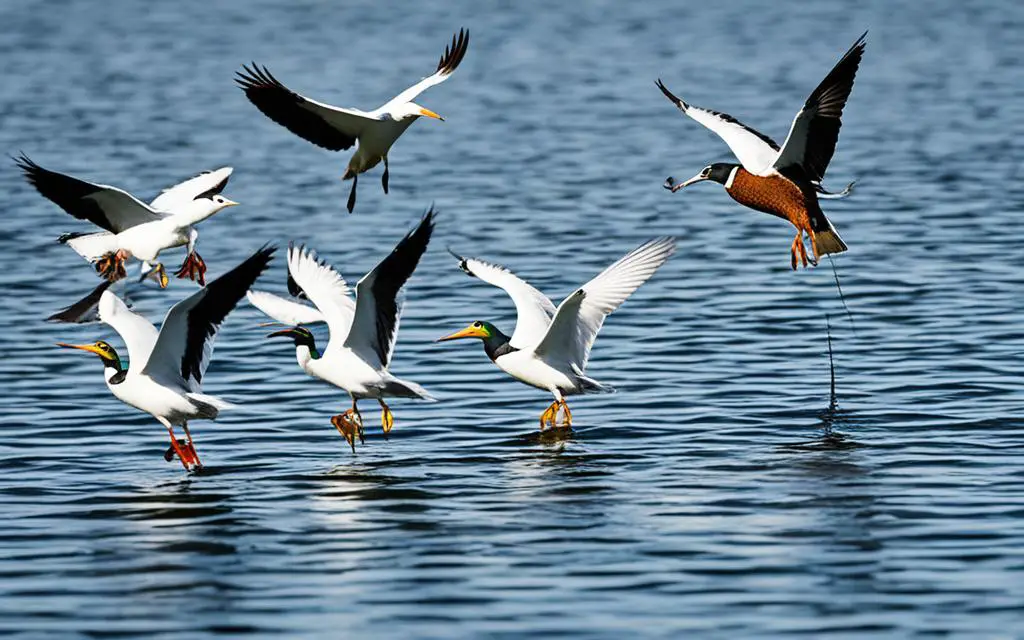
Stay tuned for the upcoming sections where we’ll delve deeper into the fishing techniques, adaptations, global distribution, and conservation efforts surrounding these remarkable avian fish catchers.
Fishing Techniques and Behaviors
Birds that catch fish have developed various fishing techniques and behaviors to effectively capture their prey. These adaptations for fishing enable them to thrive in their aquatic habitats and secure their primary food source. Let’s take a closer look at some of the remarkable fishing techniques employed by these avian predators:
Plunge-diving
One impressive fishing technique utilized by birds is plunge-diving. With remarkable precision and speed, the bird dives from the air into the water to catch fish. This technique is often employed by birds like gannets, boobies, and terns. Plunge-diving allows them to quickly and effectively capture their slippery prey beneath the water’s surface.
Surface Feeding
Another common fishing behavior observed among birds is surface feeding. This technique involves the bird picking fish from the water surface. Birds such as gulls and ducks like mergansers and scaup ducks demonstrate this feeding behavior. By skimming the water’s surface, they are able to snatch fish that are near the surface or suspended in shallow waters.
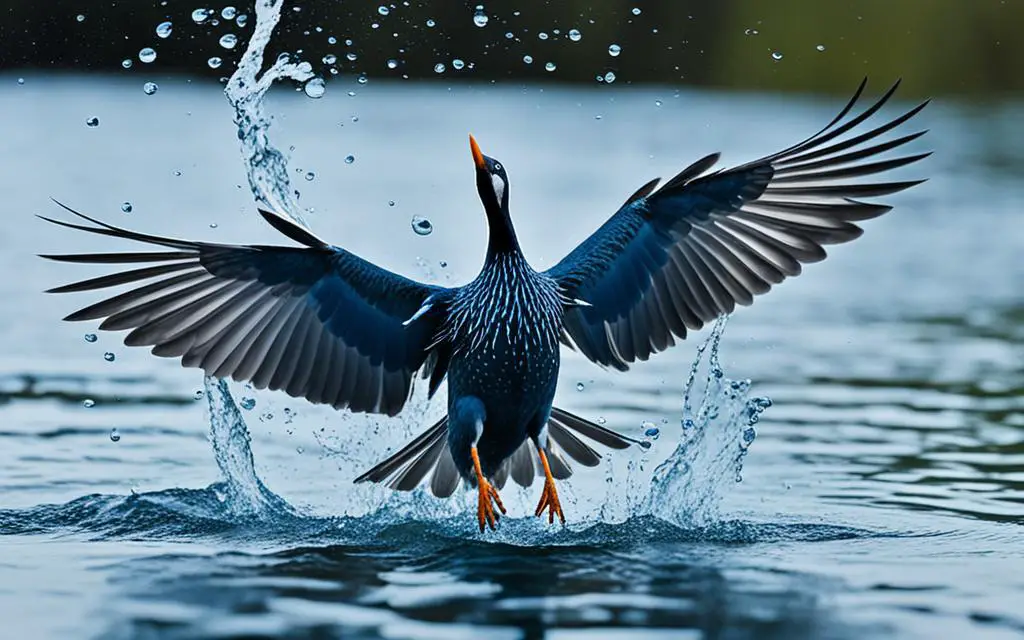
Spearfishing
Some bird species have evolved adaptations for spearfishing. These birds, including herons, egrets, and kingfishers, utilize their specialized beaks to impale fish. With swift and precise moves, they spear their prey and secure it for consumption. The natural design of their beaks aids in grasping and immobilizing the fish, ensuring a successful catch.
Skimming
A fascinating fishing technique employed by certain bird species is skimming. This technique involves the bird skimming the surface of the water with their beaks open, ready to snatch fish. Birds such as terns and avocets are known to exhibit this behavior. Their streamlined bodies and quick reflexes allow them to swiftly skim across the water, catching fish along the way.
By utilizing these fishing techniques and behaviors, birds have honed their abilities to effectively capture fish and secure their food source. These adaptations showcase the remarkable diversity and ingenuity of nature.
Adaptations for Fishing
Birds that catch fish have evolved remarkable adaptations that make them highly efficient predators in aquatic environments. These adaptations include:
- Talons: Birds such as eagles and ospreys possess sharp talons or claws that allow them to grasp and hold onto fish firmly. These talons are specially designed to provide a secure grip, enabling birds to carry their prey effortlessly.
- Beaks: The beaks of fish-catching birds come in a variety of shapes and sizes, each adapted for specific fishing techniques. For example, herons and egrets have long, pointed beaks that they use to spear fish, while pelicans have large, pouch-like beaks that allow them to scoop up fish from the water.
- Webbed Feet: Many fish-catching birds, such as ducks and pelicans, have webbed feet. These webbed feet are ideal for swimming and maneuvering underwater, enabling birds to navigate through water with ease as they pursue their prey.
- Underwater Vision: Fish-catching birds have excellent underwater vision, which allows them to locate fish even in murky or turbulent waters. Their eyes are adapted to perceive movement and differentiate between prey and surrounding vegetation.
- Keen Eyesight: Whether soaring in the air or perched on the water’s edge, fish-catching birds have exceptional eyesight that enables them to spot fish from a distance. This keen eyesight is crucial for targeting their prey accurately and effectively.
- Maneuverability: Fishing birds possess remarkable maneuverability both in the air and underwater. This agility allows them to swiftly change direction, dive, and navigate among obstacles, ensuring they can pursue and capture fish with precision.
These adaptations highlight the incredible evolutionary strategies that have allowed birds to become successful fish hunters. The combination of talons, beaks, webbed feet, underwater vision, keen eyesight, and maneuverability contributes to their prowess in the aquatic realm.
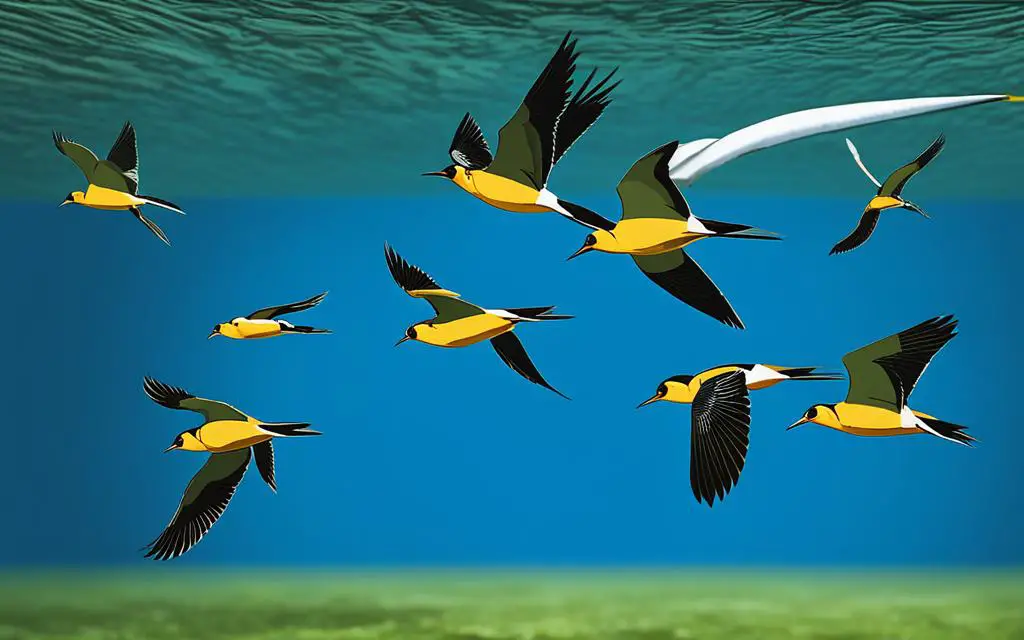
Global Distribution and Bird Diversity
Birds that catch fish demonstrate a remarkable diversity of species and can be found in various habitats across the globe. These avian predators have adapted to exploit fish as a crucial food source, leading to their widespread distribution on every continent.
In Antarctica, where icy waters prevail, birds such as the Adélie penguins dive into the frigid ocean depths in search of fish. Meanwhile, in the tropical waters of Africa, Asia, and the Americas, the vibrant colors and graceful movements of herons, egrets, and kingfishers enchant observers as they forage for fish in lush wetlands.
This global distribution of fish-catching birds highlights their incredible ability to thrive in diverse environments. It also showcases the adaptability and evolution of these species, each with its unique strategy for catching fish and surviving in its specific habitat.

Exploring Bird Diversity
When it comes to bird diversity, the world of fish-catching birds is truly astonishing. From majestic eagles soaring above lakes and rivers to agile terns diving into the sea, each species has its unique characteristics and behavior. Let’s explore some of the fascinating fish-catching birds and their distinct features:
| Bird Species | Habitat | Diet | Notable Adaptations |
|---|---|---|---|
| Bald Eagle | North America | Primarily fish | Sharp talons for catching fish |
| Osprey | Global distribution | Almost exclusively fish | Powerful claws and reversible outer toes for a more secure grip on fish |
| Pelican | Worldwide coastal regions | Fish and other aquatic species | Pouch-like bill for scooping up fish |
| Great Blue Heron | North and Central America | Fish, amphibians, and small mammals | Tall, wading stance and long neck for precise strikes |
| Kingfisher | Global distribution | Primarily fish | Sharp, pointed beak for capturing fish underwater |
These examples barely scratch the surface of the extensive diversity of fish-catching birds across the world. From the smallest kingfisher to the largest eagle, each species has evolved remarkable adaptations to support its fishing habits, enabling them to thrive in their respective habitats.
As we continue to explore the world of fish-catching birds, their global distribution and incredible diversity further emphasize their critical role in maintaining the delicate balance of aquatic ecosystems.
Threatened Species and Conservation Efforts
Unfortunately, some bird species that heavily rely on fish as a vital part of their diet are facing significant threats to their populations. Habitat loss, climate change, pollution, and the introduction of invasive species pose significant challenges to the conservation of these fish-eating birds.
Conservation efforts are crucial in protecting these threatened species and ensuring their survival for future generations. Implementing sustainable fishing practices and raising awareness about the importance of these birds and their habitats are vital steps towards their conservation.
By protecting their habitats and minimizing human-induced impacts, we can create a safe environment for these avian predators to thrive and contribute to the balance of aquatic ecosystems. Let’s explore some of the key conservation efforts and initiatives that aim to safeguard these threatened species:
Raising Awareness
Increasing public awareness and understanding of the importance of fish-eating birds is a vital aspect of their conservation. By educating communities and individuals about the ecological role these birds play and the threats they face, we can foster appreciation and support for their conservation.
Habitat Protection
Preserving and restoring the natural habitats of fish-eating birds is crucial to their survival. Efforts should focus on protecting breeding grounds, foraging areas, and stopover sites along their migration routes. Creating protected areas, implementing land-use policies, and reducing human disturbances are essential steps in habitat conservation.
Sustainable Fishing Practices
Collaboration between fishermen, fisheries management authorities, and conservation organizations is crucial in promoting sustainable fishing practices. Implementing measures such as catch limits, selective fishing gear, and seasonal fishing bans help reduce the negative impacts of fishing on fish populations and their avian predators.
Research and Monitoring
Continued research on the behavior, population dynamics, and ecological interactions of fish-eating birds is essential for effective conservation. Monitoring programs can provide crucial data on population trends, migration patterns, and potential threats, enabling targeted conservation actions.
By combining these conservation efforts with the engagement and involvement of local communities, scientists, policymakers, and conservation organizations, we can make a significant difference in the preservation of these threatened species.
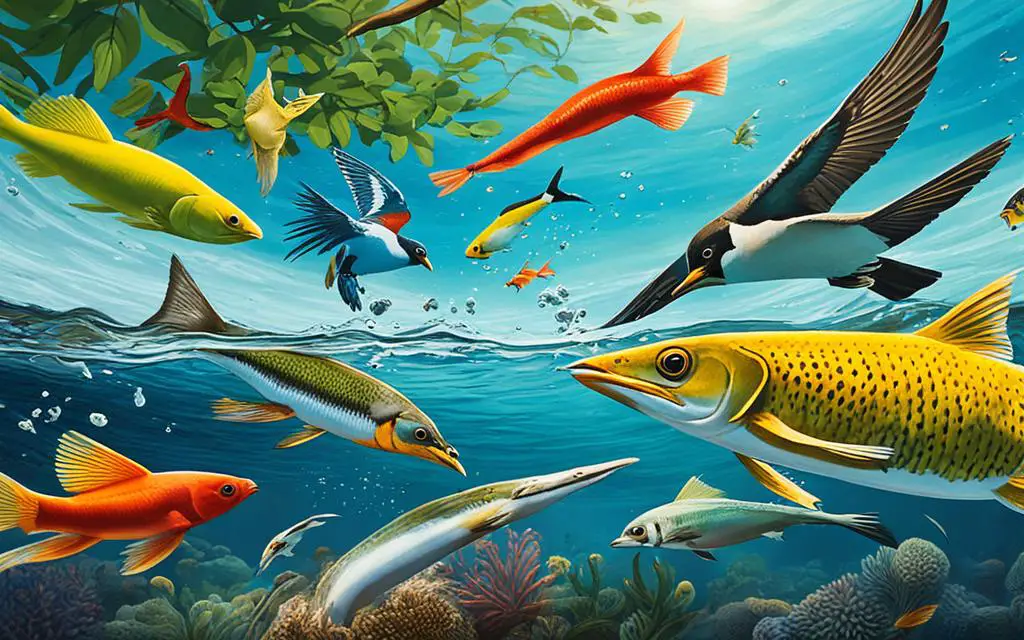
Economic and Cultural Significance
Fish-eating birds play a significant role not only in the natural world but also in our human societies. These avian predators have both economic and cultural importance, making them a subject of fascination and appreciation.
Economic Impact:
One of the key ways fish-eating birds contribute to local economies is through ecotourism and birdwatching activities. Bird enthusiasts from around the world travel to various destinations to observe and photograph these magnificent creatures in their natural habitats. This influx of visitors brings revenue to local businesses, such as tour operators, accommodations, and restaurants. Additionally, the demand for birdwatching equipment and supplies creates economic opportunities for manufacturers and retailers.
Cultural Significance:
Fish-eating birds hold cultural significance in many societies, where they are seen as symbols of wisdom, elegance, and natural beauty. These avian hunters have captured the imagination of artists, poets, and storytellers throughout history, inspiring numerous works of art and literature. In some cultures, they are associated with specific traits or qualities, and their presence is regarded as a sign of good fortune or spiritual significance.
“The beauty of fish-eating birds has long captivated artists and writers, serving as a source of inspiration in various artistic expressions. Their gracefulness and unique fishing techniques have been depicted in paintings, sculptures, and poems, immortalizing their significance in human culture.”
Fish-eating birds have a profound impact on local economies and hold a special place in cultural traditions, reflecting the deep connection between humans and the natural world. The appreciation for these avian hunters goes beyond their ecological role, making them a valuable asset for both local communities and global heritage.
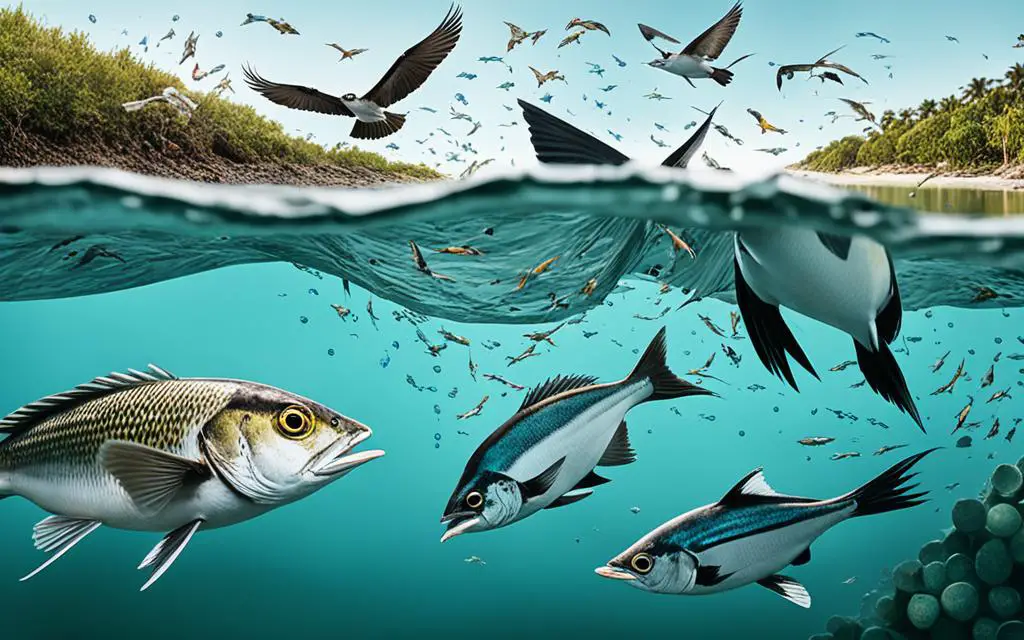
| Economic Impact of Fish-eating Birds | Cultural Significance of Fish-eating Birds |
|---|---|
| Contribution to local economies through ecotourism and birdwatching activities | Symbols of wisdom, elegance, and natural beauty in various cultures |
| Economic benefits for local businesses and manufacturers | Inspiration for artists, poets, and storytellers throughout history |
| Growth of birdwatching equipment and supplies market | Association with specific traits or qualities in certain cultures |
Research, Education, and Citizen Science
Research and education are essential in gaining a deeper understanding of the behavior, ecology, and conservation needs of fish-eating birds. Through scientific studies, we can uncover the impact these birds have on fish populations, observe their migration patterns, and recognize their crucial role in aquatic ecosystems. However, research alone cannot provide a comprehensive understanding of these avian fish catchers; it requires the collaborative efforts of birdwatchers and citizen scientists.
With their keen eyes and passion for birdwatching, enthusiasts contribute significantly to data collection and observation. By reporting bird sightings and behavior, citizen scientists help gather valuable information that aids in ongoing research and conservation efforts. This partnership between researchers and dedicated individuals strengthens our understanding of fish-eating birds and empowers conservation initiatives.
“The beauty of citizen science lies in its ability to engage and involve the public in scientific endeavors. Birdwatchers, with their love for avian creatures, play a vital role in collecting crucial data that aids in the holistic understanding and preservation of fish-eating birds.” – Dr. Jane Wilson, Ornithologist
Birdwatching, as a recreational activity, not only provides enjoyment but also serves as a valuable tool for education. It allows individuals to develop a profound connection with nature and a deeper appreciation for the diversity and wonders of the avian world. Through birdwatching, people can witness the incredible fishing techniques and behaviors of fish-eating birds firsthand, fostering a sense of awe and curiosity.
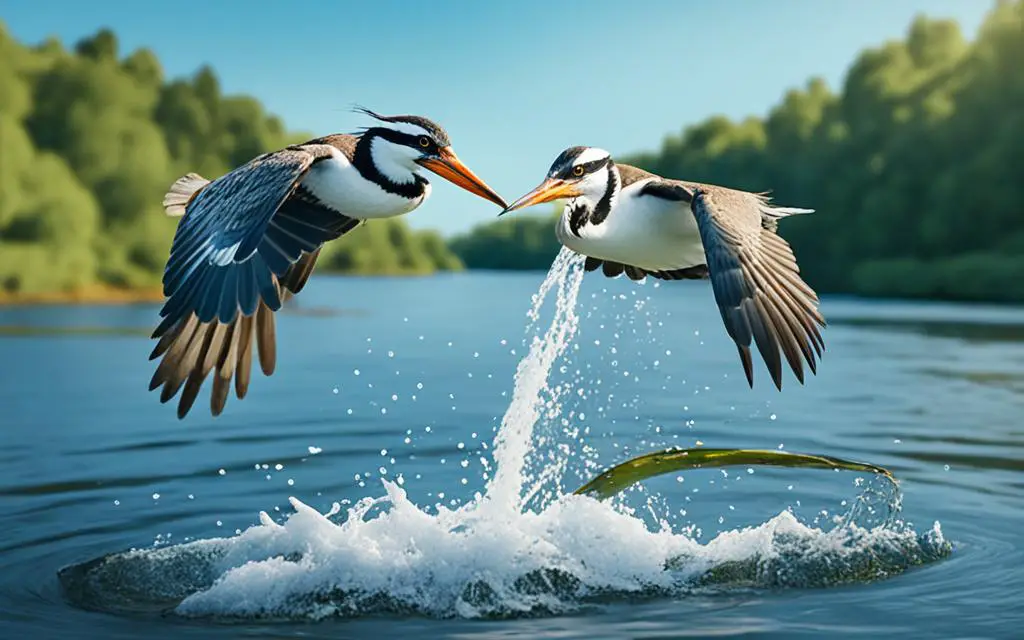
Furthermore, birdwatching serves as a gateway to learning about broader ecological concepts, including the interconnectedness of species, the importance of conservation, and the impact of human activities on natural habitats. By fostering an interest in birdwatching and citizen science, we can inspire the next generation of researchers and conservationists, ensuring the preservation of fish-eating birds and their ecosystems for years to come.
Sustainable Fishing and Environmental Impacts
Sustainable fishing practices and responsible resource management are essential to ensure the continued existence of fish populations and the survival of fish-eating birds. Unregulated fishing, habitat loss, climate change, pollution, and the introduction of invasive species can have detrimental effects on both fish populations and the birds that rely on them.
By implementing sustainable fishing practices, we can safeguard the delicate balance of aquatic ecosystems. These practices involve setting catch limits, using selective fishing methods, and protecting spawning grounds to avoid overfishing and minimize bycatch. Sustainable fishing also encompasses reducing habitat degradation and prioritizing the recovery of endangered fish species.
Habitat loss poses a significant threat to fish populations and the birds that inhabit these habitats. Destructive activities such as deforestation, dam construction, and coastal development destroy critical spawning and feeding grounds, disrupting the natural cycle of fish reproduction and reducing their availability as a food source for fish-eating birds.
Climate change further compounds the challenges faced by fish populations and bird species that rely on them. Rising temperatures, ocean acidification, and altered weather patterns disrupt the delicate ecological balance of aquatic environments, affecting the distribution and availability of fish. This, in turn, impacts the survival and reproductive success of fish-eating birds.
Pollution, including chemical pollutants and marine debris, poses another threat to fish populations and their avian predators. The influx of pollutants into water bodies contaminates fish habitats, impairing their health and survival. Fish-eating birds that consume contaminated fish can also suffer adverse effects, including reduced reproductive success and compromised overall fitness.
Invasive species, introduced by human activities, can have drastic consequences for both native fish populations and the birds that depend on them. Invasive species outcompete native fish for resources, disrupt the food chain, and alter ecosystems, leading to declines in fish populations. Consequently, fish-eating birds face dwindling food supplies and reduced breeding success.
To address these environmental impacts, it is crucial to foster awareness and promote conservation efforts. Protecting and restoring natural habitats, implementing sustainable fishing practices, and advocating for policies that prioritize ecosystem health are critical steps in preserving the intricate interconnectedness of fish, birds, and their habitats.
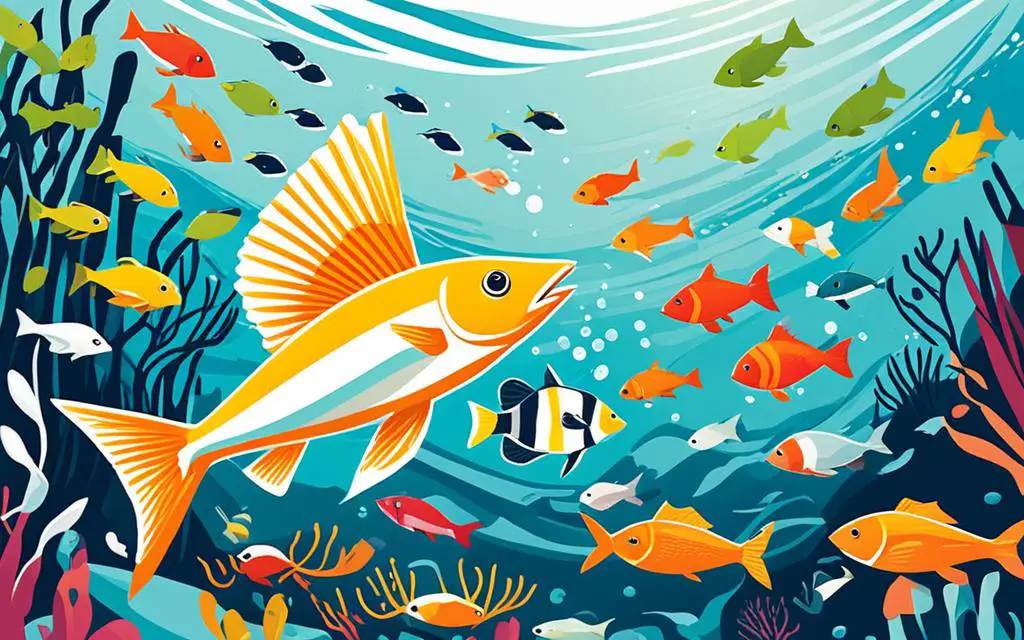
| Ecosystem Impact | Environmental Factors |
|---|---|
| Habitat loss | Deforestation, dam construction, coastal development |
| Climate change | Rising temperatures, ocean acidification, altered weather patterns |
| Pollution | Chemical pollutants, marine debris |
| Invasive species | Introduced non-native species |
Conclusion
Birds that catch fish are an incredible testament to the diversity and adaptability of avian species. From freshwater to saltwater environments, these remarkable birds have evolved unique adaptations and fishing techniques to thrive in their habitats. Understanding their behavior, conserving their habitats, and promoting sustainable fishing practices are vital for their continued survival and the preservation of the ecosystems they inhabit.
Through research and education, we can deepen our knowledge of fish-eating birds and their roles in the natural world. This knowledge empowers us to make informed decisions and take action to protect these birds and their habitats. Additionally, citizen science initiatives play a crucial role in gathering valuable data about these fascinating creatures, contributing to our understanding of their populations and behaviors.
The economic impact of fish-eating birds extends beyond their ecological significance. Ecotourism and birdwatching activities centered around these avian predators provide local communities with economic opportunities. Furthermore, fish-eating birds hold cultural significance in many societies, symbolizing wisdom, elegance, and natural beauty.
As we face challenges such as habitat loss, climate change, pollution, and invasive species, our commitment to sustainable fishing practices and environmental conservation becomes paramount. By taking the necessary steps to protect natural habitats, mitigate climate change, reduce pollution, and prevent the spread of invasive species, we can safeguard both fish populations and the birds that depend on them. Together, we can ensure a sustainable future for fish-eating birds and the interconnected ecosystems they inhabit.
FAQ
How many types of birds catch fish?
There are numerous types of birds worldwide that catch fish as part of their diet.
What are the types of fishing birds?
The types of fishing birds include eagles, ospreys, pelicans, cormorants, herons, egrets, kingfishers, dippers, loons, penguins, terns, gulls, ducks, storks, gannets, boobies, and frigatebirds.
What are the fishing techniques and behaviors of birds?
Birds use various fishing techniques such as plunge-diving, surface feeding, spearfishing, and skimming to catch fish.
What adaptations do birds have for fishing?
Birds have adaptations like sharp talons, specialized beaks, webbed feet, excellent underwater vision, and keen eyesight to aid in their fishing endeavors.
Where can fish-catching birds be found?
Birds that catch fish can be found in various habitats worldwide, including freshwater and saltwater environments.
What conservation challenges do fish-eating birds face?
Threats to fish-eating birds include habitat loss, climate change, pollution, and invasive species, making conservation efforts crucial for their survival.
What is the economic and cultural significance of fish-eating birds?
Fish-eating birds contribute to local economies through ecotourism and hold cultural importance as symbols of wisdom and natural beauty.
What roles do research, education, and citizen science play in understanding fish-eating birds?
Research and education help uncover bird behavior and conservation needs, while citizen scientists contribute to data collection through birdwatching and reporting sightings.
How can sustainable fishing practices and environmental impacts be addressed?
Promoting sustainable fishing practices, protecting habitats, and addressing issues like habitat loss, climate change, pollution, and invasive species are crucial for the survival of fish populations and fish-eating birds.
What are the key points about fish-eating birds?
Fish-eating birds display a remarkable diversity of species, adaptations, and fishing techniques, can be found in freshwater and saltwater environments, face conservation challenges, hold economic and cultural significance, and require research, education, and sustainable fishing practices for their preservation.
Source Links
- http://vireo.ansp.org/bird_academy/fish-eating birds.php
- https://bayweekly.com/unique-fishing-styles-of-birds/
- https://www.americanoceans.org/facts/birds-that-eat-fish/

My name is Shane Warren, the author behind Your Bird Buddy – your ultimate guide to the wonderful world of birds! Unleash your inner avian explorer as we delve into a vibrant library of knowledge dedicated to all things feathered. From learning about diverse bird species from across the globe to understanding their captivating habitats and behaviors, I’m here to fuel your passion for these magnificent creatures. Not only that, but I also provide valuable insights on being a responsible and informed pet bird owner. Join our vibrant community and let’s celebrate the feathered wonders of the world together – one chirp at a time. And be sure to join our Your Bird Buddy Community over on Facebook!

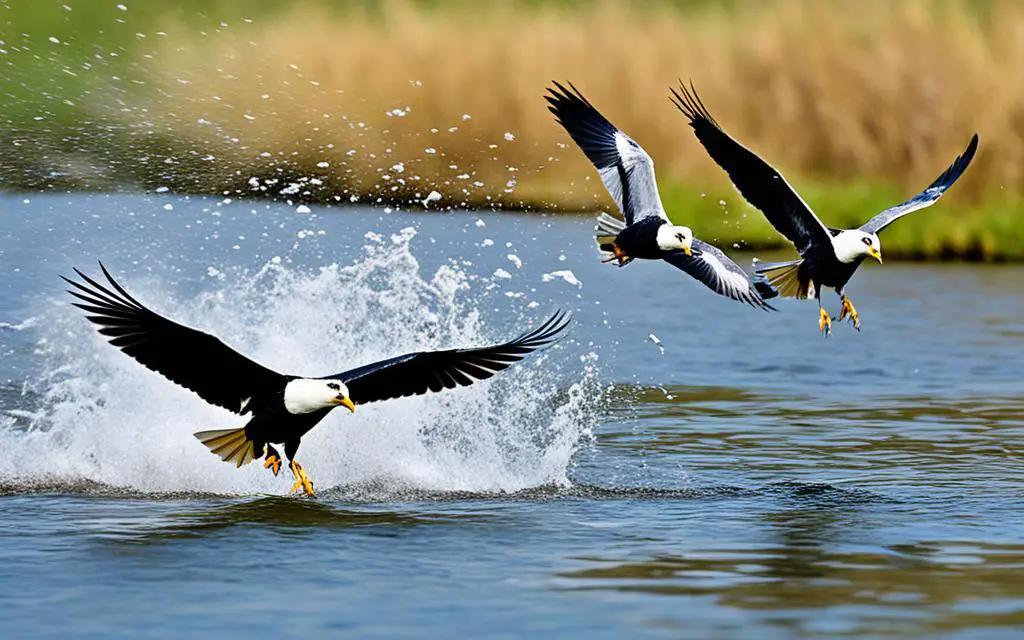
Comments are closed